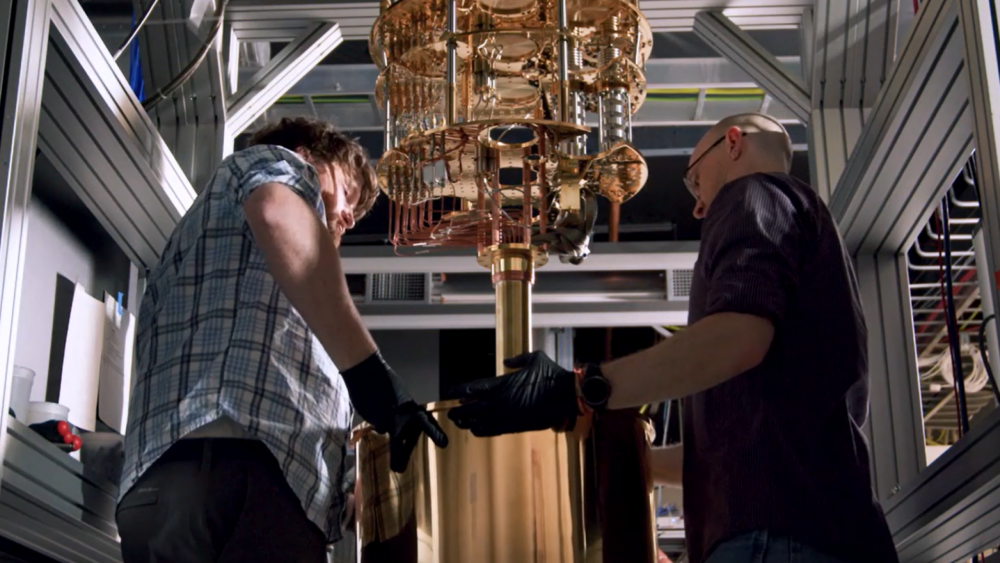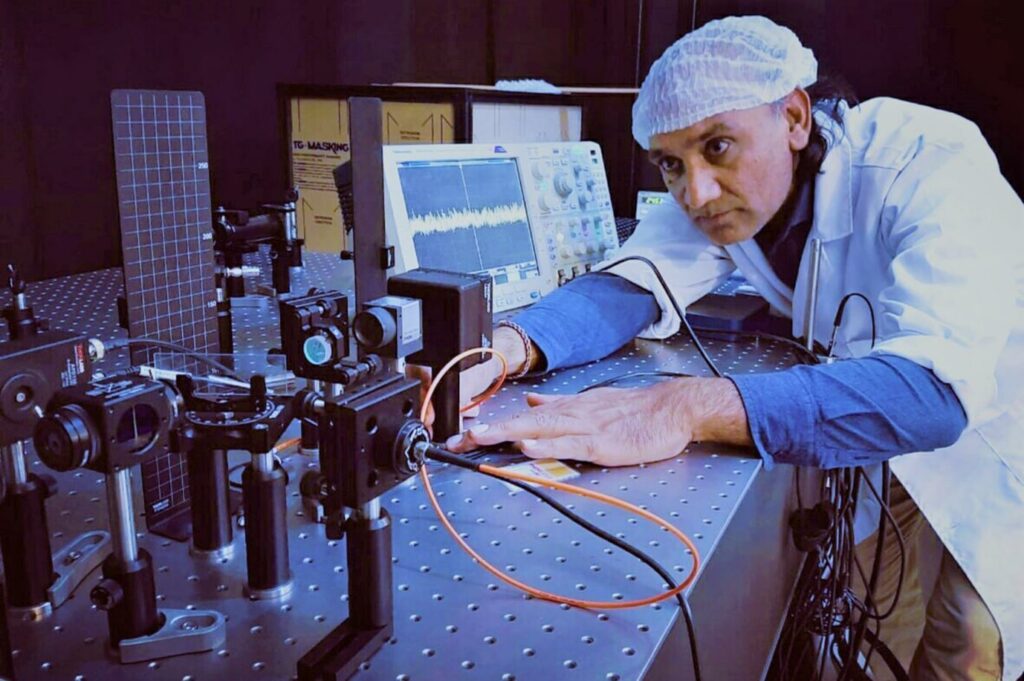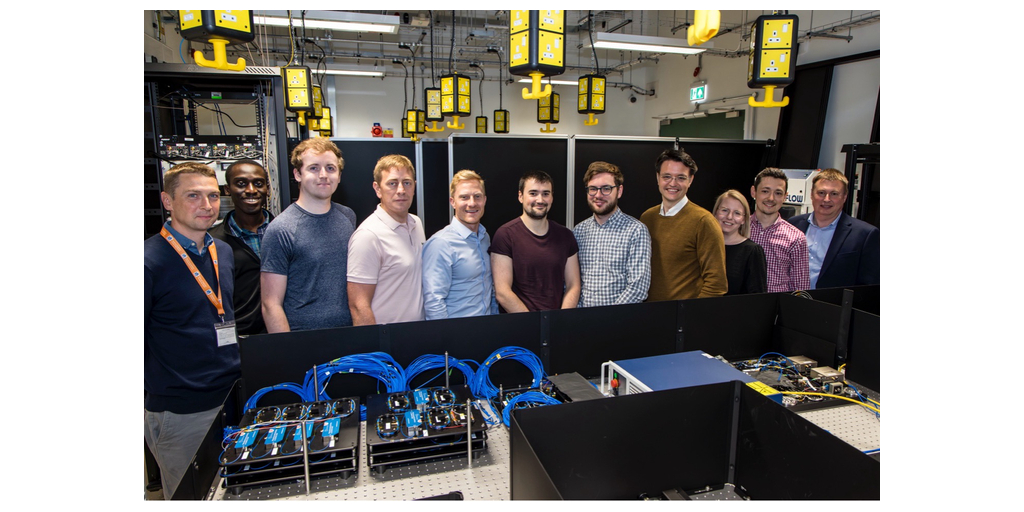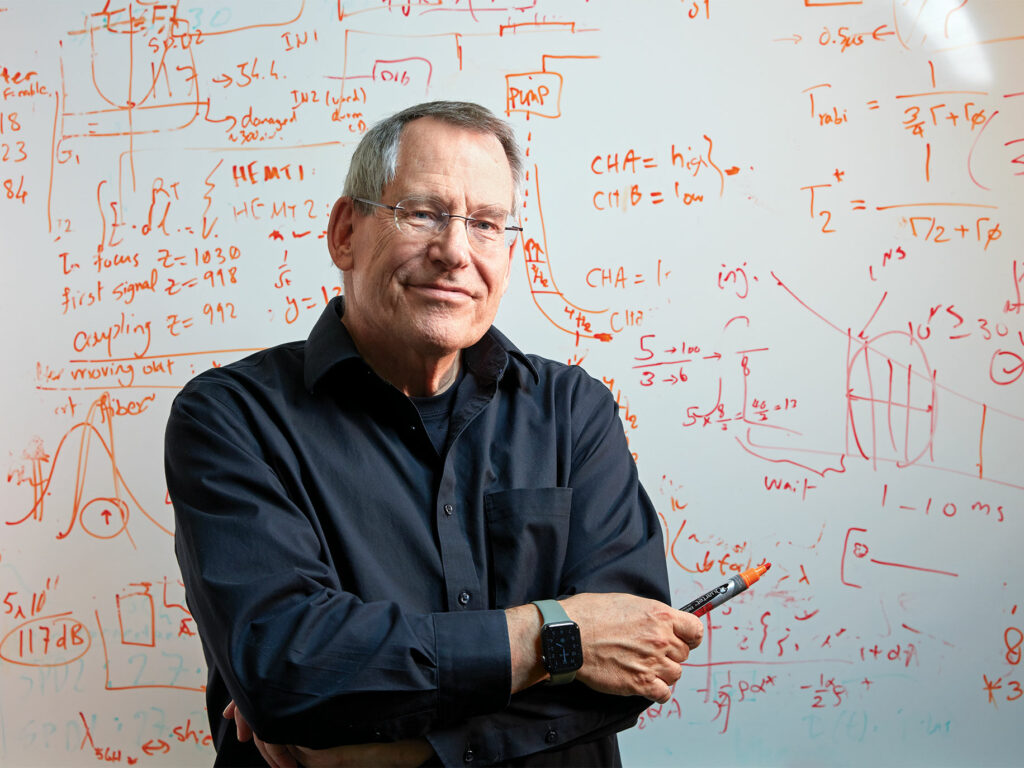Insider Brief
- Microsoft’s Azure Quantum program represents the tech giant’s ambitious plan to master the world of quantum computing.
- Dr. Krysta Svore, Distinguished Engineer and VP of Advanced Quantum Development of Microsoft Quantum, discussed the Microsoft’s quantum past, present… and future.
- Svore said Azure Quantum Elements is a platform that leverages the expansive scale of cloud computing, the speed of AI models and the accuracy of quantum computing.
PRESS RELEASE — Microsoft’s Azure Quantum program represents the tech giant’s ambitious foray into the world of quantum computing, encompassing a holistic approach that goes beyond mere hardware. As a cornerstone of Microsoft’s commitment to next-generation computing, the company aims to pioneer breakthroughs by integrating quantum algorithms with high-performance computing and artificial intelligence, while also pursuing a quantum supercomputer. Their integrated approach, encapsulated by offerings like Azure Quantum Elements, underscores Microsoft’s position at the forefront of this transformative technology.
In a fireside chat at a recent quantum conference, Dr. Krysta Svore, Distinguished Engineer and VP of Advanced Quantum Development of Microsoft Quantum, discussed the Seattle-based company’s exploration of quantum computing over the past two decades, the steps being taken towards designing a quantum supercomputer and the strategy for navigating the rapidly-evolving landscape of quantum algorithms.
Svore offered insights into Microsoft’s specific area of focus within quantum computing. She highlighted the significance of understanding why quantum computing has gained momentum, with particular emphasis on its potential impact in chemistry and materials science.
“I think the key applications, and what we’ve landed on after studying and understanding the landscape of quantum algorithms, are in chemistry and materials science,” said Svore.

Experts are particularly interested in how a potential quantum computing revolution could transform research in chemistry, and, broadly, the chemical industry. The intricacies of molecular and chemical interactions, once deemed too complex for classical computational paradigms, may be more readily explored using quantum computers backed by quantum algorithms. With the capability to accurately simulate and predict molecular behaviors at an atomic level, quantum computing holds the promise to revolutionize catalysis and materials design. According to many experts, the synergy of quantum principles with chemical research paves the way for groundbreaking solutions, from developing innovative medications to crafting sustainable energy sources.
Elaborating on the potential impact of quantum in the realms of chemistry and materials science, Svore said, “Chemistry and materials science impacts all of us, and underpins some of the biggest challenges facing our planet, like sustainability and food production. A quantum supercomputer, integrated with HPC and AI, will be able to accurately predict molecular properties not possible with classical computing. ”
Microsoft Quantum, she said, has built a quantum platform for research discovery, combining the strengths of high-performance computing (HPC), artificial intelligence (AI) and quantum computing to spur groundbreaking advances.
Discussing the recent developments in Microsoft’s quantum division, Svore said, “What we’ve developed recently is Azure Quantum Elements. This is a platform for really accelerating computational chemistry and materials science discovery and innovation.”
Azure Quantum Elements, she added, is a platform that leverages the expansive scale of cloud computing, the speed of AI models and the accuracy of quantum computing.
Quantum and AI, together
The integration of quantum computing and AI promises a paradigm shift in computational prowess and problem-solving capabilities. Quantum computers, with their inherent ability to compute more like nature, at scale will be able to dramatically improve the accuracy of some computational chemistry calculations, while AI will dramatically amplify the speed and efficiency of understanding large amounts of data. Together, quantum and AI, with data-driven insights and improved accuracy, can optimize and streamline how to approach predictive computational design. Scientists predicted that when AI and quantum are working together, the technologies can tackle previously insurmountable challenges, from simulating complex chemical systems for catalysis design to improving batteries.. The integration also hints at the potential for breakthroughs in machine learning models, enabling them to learn and predict with unprecedented accuracy and speed. This harmonious blend of quantum mechanics and AI foretells a revolutionary leap in technological advancement.
Besides integrating quantum and AI to transform solutions, the company is finding other ways to use AI to help its quantum users. This summer, Microsoft showed off “Copilot in Azure Quantum”, a GPT-4 based large language model (LLM) tool that can help quantum researchers.
While elaborating on the synergy between AI and quantum computing, Svore pointed out that Microsoft, itself, has unique synergies. Microsoft is home to some of the world’s most advanced AI projects and has connections to the cutting-edge developments in generative AI. It’s also home to Microsoft Quantum, a world leader in quantum research. Working together, these two teams make powerful partners in tapping both technologies for real-world uses.
Levels of Quantum Progress
Speaking about the roadmap Microsoft has charted for quantum computing, Dr. Svore clarified the hierarchical progression they envision for the industry, “There are three quantum computing implementation levels: Level 1 is foundational, and NISQ machines are at level 1. Level two is resilient, and level three is the quantum supercomputer.”
As quantum computers climb these tiers, the metrics for assessing their performance also undergo transformation. Error rates become pivotal metrics for level two resilient machines, while the introduction of a new metric called ‘reliable quantum operations per second’ (called rQOPS by Microsoft) is emphasized for the top tier, i.e., quantum supercomputers.
Svore said that Microsoft Azure Quantum is at the forefront of understanding quantum algorithms and their requirements, in order to identify the best way to design and build the quantum supercomputer. In turn, her team has focused on understanding the latest benchmarking procedures, while also developing new measures to understand the performance of future quantum supercomputers on practical applications.
“As an industry, we need a different figure of merit, one that measures system performance on real applications, as we look at evaluating what’s needed from quantum computers. rQOPS is to the quantum computing industry what FLOPS is to the HPC industry.” said Svore.
Benchmarking in quantum computing is indispensable for validating performance claims, comparing diverse quantum systems and ensuring the quality and reliability of qubits and algorithms. As the field evolves, standardized benchmarks offer clarity on a system’s capabilities, guide optimizations and build trust among potential users. Different quantum architectures, designs and algorithms are also emerging. Benchmarking provides a consistent metric to evaluate that progress, while validating quantum advantage and setting industry standards to ensure the effective development and deployment of quantum technologies.
Strides Toward The Quantum Era
While the quantum industry is often portrayed as a race between competing firms and research institutions, Svore sees it more like a relay race, with teams of scientists, business leaders and entrepreneurs making strides together to reach the finish line.
As the conversation shifted towards these collaborative efforts, Svore emphasized the significance of a combined global initiative in the quantum domain. “This is going to require more than just technology companies, it’s going to require working with academia, working with research institutions, national labs, to come together and move it forward.”
Svore said that the prize at the end of this finish line – practical quantum computing – is no less than solutions to some of the world’s most daunting challenges. She stressed that a quantum supercomputer would be optimally equipped to address some of those imminent global challenges, especially in sustainability and clean energy.
If you found this article to be informative, you can explore more current quantum news here, exclusives, interviews, and podcasts.



















